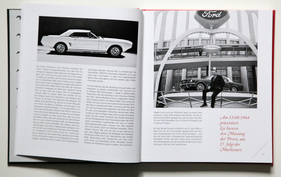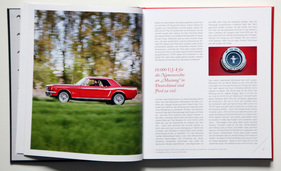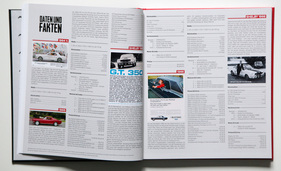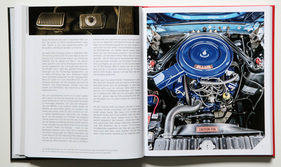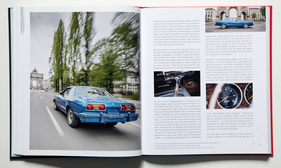If you were to compile a list of the vehicle types most frequently documented in books, you would probably find the Ford Mustang (together with the Porsche 911) pretty high up. It's true that there are plenty of books about the Mustang. But this is certainly justified because, firstly, even its modern descendants produce emotions and, secondly, the Ford Mustang was the beginning of a new type of car, namely the pony car. These were sporty, yet practical coupés and convertibles suitable for everyday use, which fulfilled exactly the need of drivers in the sixties to be mobile and cool.

A different approach
In the foreword, author Dani Heyne makes it clear that he is aware of the problems associated with the many Mustang books. And that he, himself a Mustang owner, was therefore looking for a different approach. In addition to useful facts and information, his book "Ford Mustang - The fastest pony in the world since 1964" focuses primarily on the owners and their cars.
Over 50 years of emotions
All generations of the sporty Ford are covered in the book "Ford Mustang - the fastest pony in the world since 1964", and this is even done on a fairly equal basis.
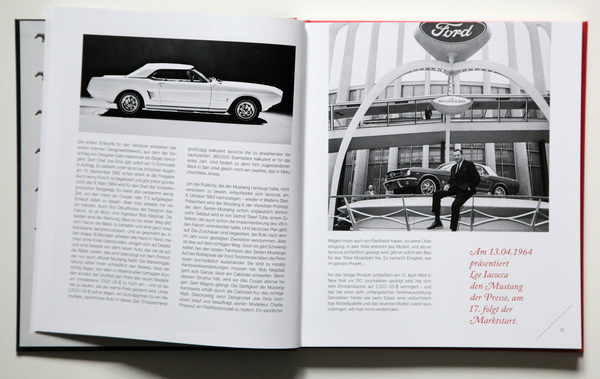
And we learn that even the later generations up to today's cars, which are much more reminiscent of their origins, have their fan community.
Clearly structured design
Each significant generation, including the mid-engined Mustang that never went into series production, has a chapter of around 12 to 20 pages devoted to it. Each chapter contains a portrait of the surviving example and a factual basis for the era, summarizing the description, dimensions, unit numbers, serial numbers/engine codes, prices and extras in a small space. For example, you learn that the power steering cost USD 94.95 in 1969 and the Mustang Mach I cost USD 3122. However, the USD prices and the total number of units produced are always listed; from a local perspective, our local prices and the imported quantities would of course also have been of interest.

There are also a few interesting chapters on the subject of originality, use in racing or restoration. There is also a "kind of" buyer's guide, which primarily seeks to advise on picking the right type of Mustang. And it should be mentioned once again: unfortunately there is no index here either.
Mostly modern images
It is certainly a book to indulge in, because the cars have been staged dynamically and tastefully (even if they are often somewhat wide-angled). In addition, the fact sections are illustrated with historical images that are still fun to look at today.
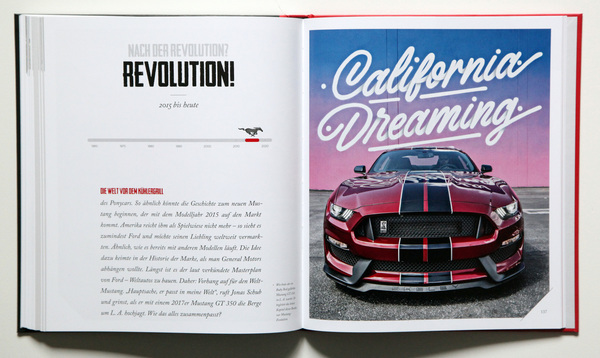
The structure and the stories entice you to read on and look at them several times. And then there are some very special treats, such as the complete transcript of Lee Iacocca's speech at the presentation of the Mustang on April 13, 1964.
For beginners and fans
Dani Heyne's book provides Mustang novices with a pleasant introduction to the subject, while the fact chapters and additional information offer fans further insights. Anyone interested exclusively in the mild Mustang of the seventies or the Shelby variants of the original Mustang, for example, will probably find more depth and information in other books, but for those interested in an overview, Heyne's book is a good starting point.

Bibliographic information
- Title: Ford Mustang - The fastest pony in the world since 1964
- Author: Dani Heyne
- Language: German
- Publisher: Delius Klasing
- Edition: 1st edition 2017
- Format: Hardcover, 23.5 x 27 cm
- Scope: 176 pages, 203 mainly color illustrations
- ISBN: 978-3-667-11065-7
- Price: EUR 29.90
- Buy/order: Online at amazon.de, online at the publisher Delius Klasing or at the relevant bookstore












